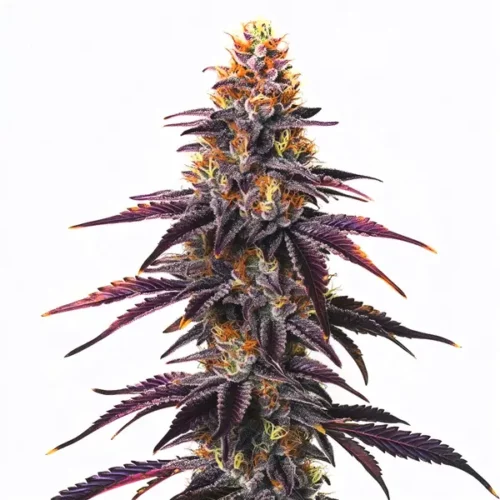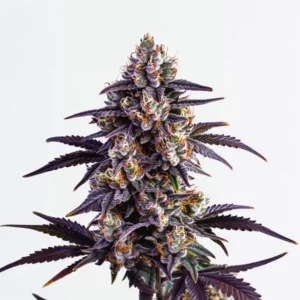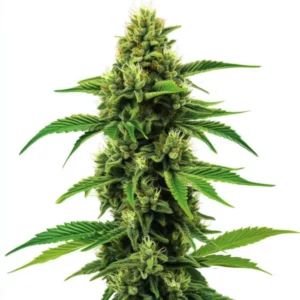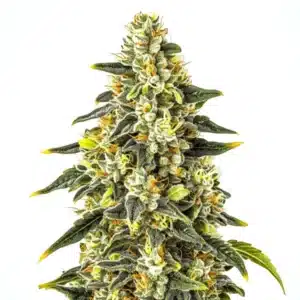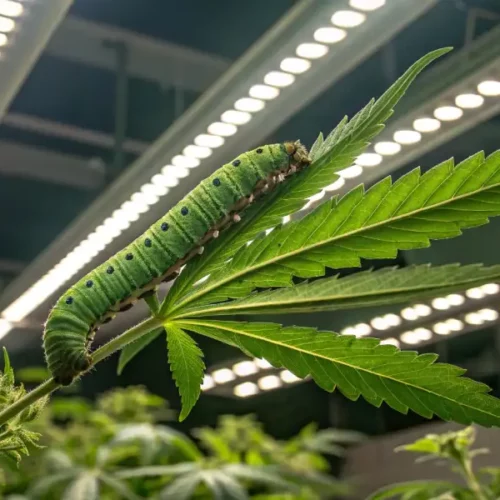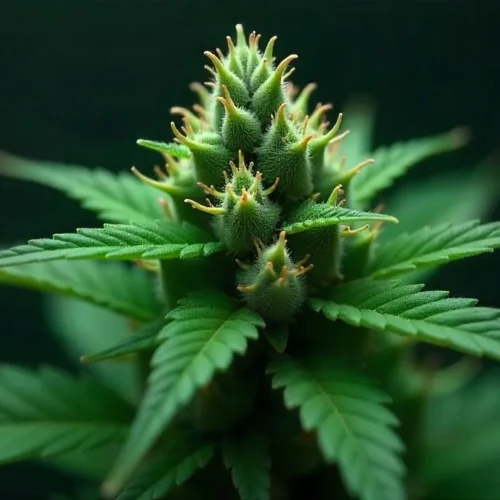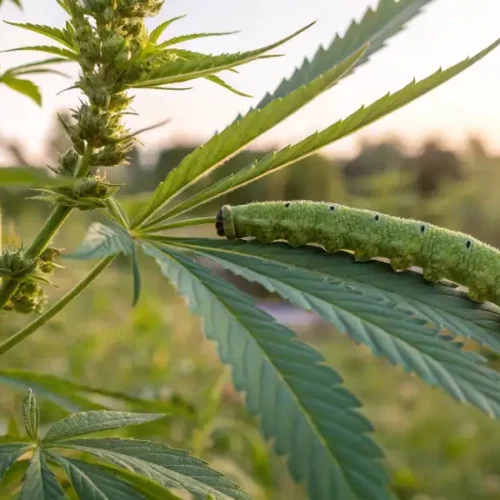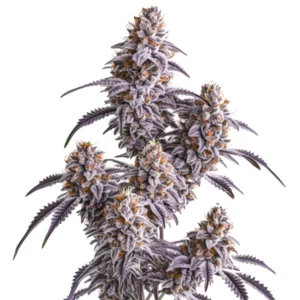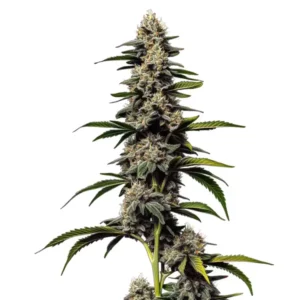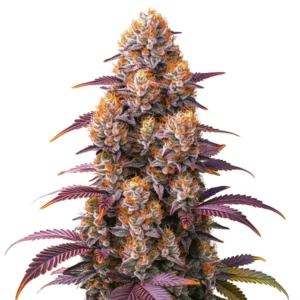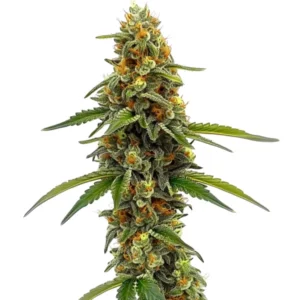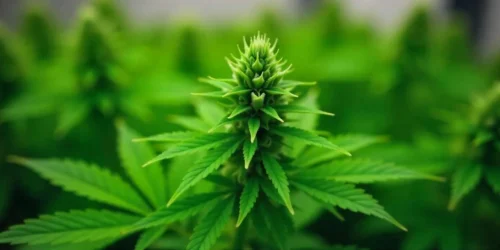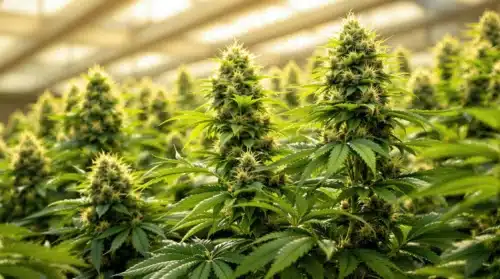Finding Quality Cheap Clones
How to Spot Quality in Affordable Clones
When looking for cheap clones, it’s crucial to spot high-quality options among budget choices. Quality clones typically have vibrant green leaves, sturdy stems, and a visible root structure beginning to develop. Look for bright, consistent color without yellowing, which indicates healthy growth potential. Sturdy stems also mean the clone is ready to establish roots successfully.
A quick inspection of the root area is key. Even in cheap clones, a few visible white roots signal that they will adapt and grow well after transplantation. Avoid clones with damaged or discolored leaves, as these signs could point to underlying issues.
Recommended Strains
Runtz
 THC: 19 - 22%
THC: 19 - 22% Type of seed: Feminized
Type of seed: Feminized Phenotype: Mostly Sativa
Phenotype: Mostly Sativa Day to flower: 8 - 10 weeks
Day to flower: 8 - 10 weeks
Runtz Autoflower
 THC: 18% - 22%
THC: 18% - 22% Type of seed: Autoflowering
Type of seed: Autoflowering Phenotype: Mostly Indica
Phenotype: Mostly Indica Day to flower: 8 - 9 weeks
Day to flower: 8 - 9 weeks
Trusted Sources for Budget-Friendly Clones
Finding cheap clones from reliable sources increases the chances of success. Local nurseries and cannabis dispensaries often provide clones at budget-friendly prices. Many dispensaries offer clones with bulk discounts, and online sources sometimes have seasonal sales. However, it’s essential to verify vendor reputation by reading customer reviews and checking their history in clone cultivation.
Community networks or online forums are also excellent places to find recommendations. Local growers can offer insight into trusted sources where you can find high-quality cheap clones, providing you with options that are both affordable and effective.
Promos & Deals
Essential Tips for Buying Cheap Clones
Verifying Clone Health Before Purchase
Before committing to cheap clones, take the time to check their health. Ask about the mother plant, as it influences clone quality. Strong mother plants typically produce resilient clones. Inspect the clone leaves and stems for any signs of mold or pest damage. Healthy clones have clean, bright leaves and firm, unblemished stems.
For the best results, verify that the roots are white and fibrous. Clones with a strong root system are more likely to adapt and thrive after transplanting, reducing future growth problems that could arise from less healthy clones.
Key Indicators of Strong Genetics in Budget Clones
Even with cheap clones, genetics play a major role in quality. Strains like Blue Runtz or Gelato 33 are known for strong genetic profiles, making them reliable choices even at a lower price point. Ask vendors about the strain background to ensure you’re selecting clones with solid lineage.
Good genetics in clones lead to consistent growth patterns, healthier plants, and better yields. Investing a little time in learning about the genetics of your cheap clones can save you time and frustration down the line.
Growing Cheap Clones Successfully
Best Practices for Maximizing Yield from Affordable Clones
Maximizing yield from cheap clones starts with a stable growing environment. Ensure clones receive balanced light, water, and nutrients to boost their yield potential. Cheap clones may need additional care, especially in their early stages. Use nutrient-rich soil and consider adding supplements to enhance their growth.
Provide gentle airflow and moderate humidity to promote root development without risking mold. Cheap clones often come from less premium sources, but with the right setup, they can yield impressive results that rival their pricier counterparts.
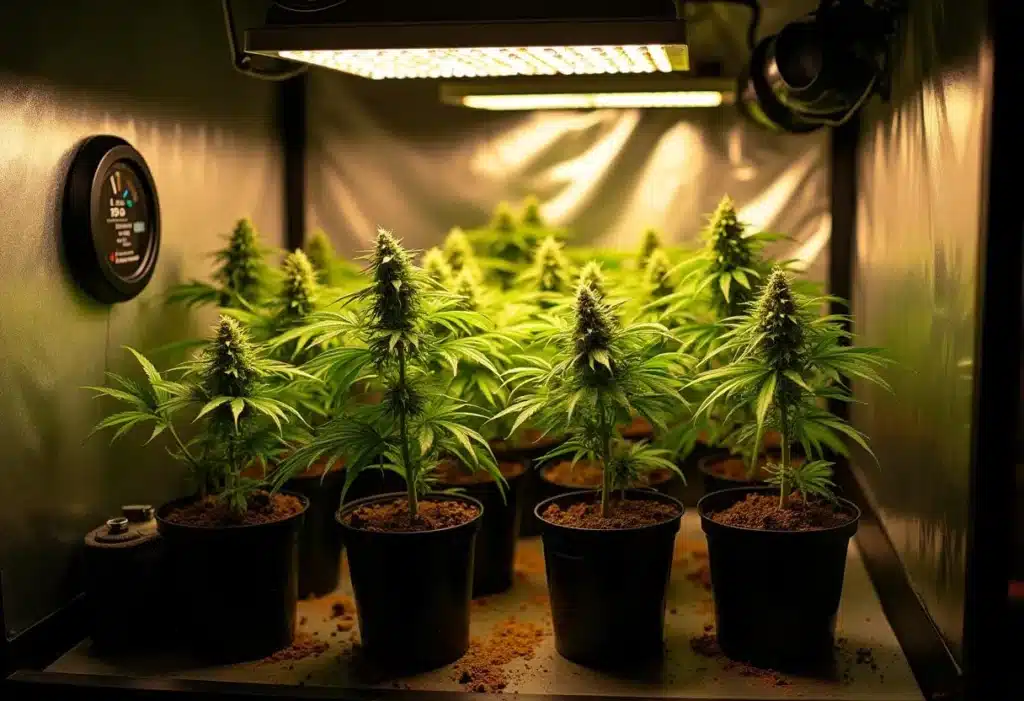
Environmental Requirements to Support Clone Health
For cheap clones to thrive, set up an ideal environment. Maintain temperatures between 70°F to 75°F and keep humidity around 70-80% initially. These conditions encourage root growth and prevent common issues like root rot. Over time, gradually reduce humidity as clones mature.
Lighting is another critical factor. Avoid direct sunlight until clones are fully established, as they can be sensitive to intense light. Indoor grow lights allow for more precise control, ensuring that even budget clones receive the conditions they need for optimal growth.
Affordable Alternatives to High-Cost Clones
Advantages of Cloning Your Own Plants
Cloning your own plants is a cost-effective way to maintain quality without repeatedly purchasing new clones. By establishing a mother plant, you can create clones whenever needed, avoiding the costs associated with store-bought options. This method also ensures you know exactly what genetics you’re working with.
Growing your own clones adds flexibility to your grow operation, letting you control factors like resilience and growth patterns. Plus, it reduces the risk of pests or diseases that sometimes come with clones purchased from external sources.
Exploring Local Growers and Dispensaries for Budget Options
Local growers and dispensaries can be great sources of cheap clones. Many dispensaries offer discounts on clones that might not meet visual standards but are still healthy and viable. Growers may also sell extra clones at a reduced price, providing an affordable alternative to pricier options.
Networking with growers in cannabis communities can open doors to budget-friendly clones. Many growers are willing to share or sell clones within their networks, allowing you to find reliable, low-cost options without sacrificing quality.
Common Issues with Cheap Clones and Solutions
Recognizing Weaknesses in Budget-Friendly Clones
Cheap clones can sometimes show weaknesses, such as stunted growth or minor pest infestations. Look out for symptoms like yellowing leaves or weak stems, which are common issues in low-cost clones. Early identification of these problems allows for prompt action, increasing the chance of successful growth.
One way to avoid spreading issues is to keep new clones separate from other plants for the first week. Isolating new additions helps ensure any underlying problems are addressed before they affect the rest of your grow.
How to Strengthen Roots and Stems in Cheap Clones
Strengthening cheap clones starts with supporting their root and stem development. Use rooting hormones to encourage strong root growth and consider silica-based supplements to strengthen stems. Providing adequate light and airflow further supports stem and root health, helping clones establish quickly.
Humidity domes can also assist in early root growth, particularly for budget clones that may need a little extra support. This method keeps clones in an ideal environment, boosting their development as they transition into stable growth phases.
Essential Tips for Maximizing Yield in Cheap Clones
Best Nutrient Practices for Budget Clones
Providing the right nutrients is critical for maximizing yield, especially with cheap clones. Start with a balanced nutrient solution rich in nitrogen, phosphorus, and potassium, which are essential for growth and flowering. Using a high-quality nutrient mix can significantly boost cheap clones, giving them the support needed to thrive in early stages.
Feeding schedules should be closely monitored. Too much fertilizer can overwhelm clones, especially those from budget sources. Begin with half the recommended dose, gradually increasing as they adjust to their new environment. This approach minimizes the risk of nutrient burn and supports steady growth, ensuring that even inexpensive clones reach their full potential.
Creating Optimal Light Conditions for Affordable Clones
Light is a primary driver of growth in cannabis clones. Budget clones may respond particularly well to carefully adjusted lighting setups. Start with gentle, indirect light to avoid stressing them, gradually transitioning to a stronger setup as they mature. Using full-spectrum LEDs or fluorescents offers control over light intensity, optimizing photosynthesis and development.
Consider using timers to maintain a consistent light schedule, ideally 18 hours on and 6 hours off during the vegetative stage. This balance helps affordable clones build a strong structure while conserving energy for flowering. Fine-tuning your light setup ensures that cheap clones get a chance to grow into robust, productive plants.

Affordable Ways to Boost Clone Health and Longevity
Incorporating Low-Cost Growth Supplements
While high-end products are widely marketed, several affordable supplements can benefit cheap clones without breaking the bank. Organic products like kelp extract and worm castings improve soil health, providing natural nutrients that support root development and plant immunity. These supplements are cost-effective yet powerful for clone growth.
Adding low-cost enzymes and beneficial bacteria to the soil can further enhance nutrient uptake. These additions encourage a healthy soil ecosystem, providing clones with everything they need for steady, resilient growth. By investing in these natural boosters, you give budget clones a chance to thrive.
Maintaining Consistent Conditions for Healthier Clones
Consistency is key to helping cheap clones develop into strong plants. Small fluctuations in temperature or humidity can impact their growth. Keep the environment steady, with temperatures between 70-75°F and moderate humidity levels around 60%. This stability prevents stress, allowing clones to focus on root and leaf development.
Using a simple humidifier and fan setup can provide controlled airflow and humidity, ensuring your clones stay within their comfort zone. Keeping conditions consistent is a fundamental yet budget-friendly approach to nurturing affordable clones into productive, healthy plants.
Troubleshooting Growth Problems in Cheap Clones
Recognizing Early Signs of Stress in Budget Clones
Cheap clones can sometimes be more sensitive to stress factors, so it’s essential to recognize early signs. Yellowing leaves, drooping stems, or slowed growth may indicate that clones are struggling. Identifying these signals quickly allows you to make the necessary adjustments in lighting, humidity, or nutrients.
Observing clones closely for the first two weeks can reveal potential issues. Budget clones may need additional support, and making small changes early prevents more significant setbacks later. By proactively addressing these minor challenges, you maximize their chances of successful development.
Addressing Common Pest and Mold Issues in Clones
Budget-friendly clones may sometimes come with pest or mold issues. Common problems include spider mites, aphids, and powdery mildew. Keep new clones separate from other plants initially to avoid spreading potential pests. Regularly inspect the undersides of leaves for any signs of infestation.
Using organic treatments like neem oil or insecticidal soap can control minor infestations without harming the plants. If mold is present, increasing airflow and slightly reducing humidity helps to discourage further growth. These simple interventions can effectively manage common issues in cheap clones, preserving their health without high costs.
Enhancing Value with DIY Cloning
Taking Cuttings from Your Budget-Friendly Clones
Once your cheap clones reach maturity, you can create your own clones by taking cuttings. This process, known as DIY cloning, is an excellent way to expand your plant count without buying more clones. Select the healthiest branches from your established plants to ensure that new clones inherit strong characteristics.
Taking cuttings allows you to propagate plants without any additional expense. Prepare rooting solutions to boost the clone’s chances, and keep the environment warm and humid. DIY cloning not only enhances the value of your initial investment but also gives you control over the future growth of your cannabis garden.
Using Rooting Techniques to Multiply Your Clones
Propagating clones effectively means employing the right rooting techniques. Soak cuttings in a rooting solution or gel, which helps promote root formation, particularly in new cuttings. Place the prepared clones in a rooting medium, such as coco coir or rockwool, and maintain high humidity to support root growth.
Over time, you’ll establish a cycle of clones that reduces dependency on external sources. This self-sustaining approach to cloning adds value to your growing operation while keeping costs low.
Common Issues with Cheap Clones and Solutions
Recognizing Weaknesses in Budget-Friendly Clones
Budget-friendly clones may sometimes show signs of weaker growth or reduced resilience compared to higher-priced options. Look out for thin stems, small leaf size, and slow growth rate as indicators that clones need additional support. Addressing these issues early is essential to give these clones a chance to thrive, especially if they’re intended to produce a decent yield.
To strengthen weak clones, increase their exposure to indirect light and consider gentle feeding with balanced nutrients. Adding a mild growth supplement, such as liquid kelp or fish emulsion, can help promote healthier growth and improve resilience. By recognizing and addressing these early weaknesses, you maximize the potential of cheap clones to grow into strong plants.
Strengthening Roots and Stems in Budget Clones
Root and stem health are crucial for the success of budget-friendly clones. Clones purchased at lower prices sometimes have weaker root structures, making it essential to support root development as early as possible. Adding mycorrhizal fungi to the root zone can significantly boost nutrient uptake and root growth, giving your clones a solid foundation.
Additionally, providing low-stress training (LST) helps strengthen stems and build a more robust structure. LST encourages clones to develop thicker stems capable of supporting heavier buds during flowering. Strengthening these essential parts early ensures that cheap clones become reliable, high-yielding plants by the end of the growing cycle.
Affordable Alternatives to High-Cost Clones
Cloning Your Own Plants for Budget-Friendly Expansion
Growing a successful cannabis garden can get expensive, but cloning your own plants offers a budget-friendly alternative. By selecting the healthiest plants in your garden, you create reliable clones without spending extra. This approach also allows you to control the genetic quality of your plants, ensuring that only high-performing strains continue in your setup.
Taking cuttings from strong plants saves money while giving you clones that are accustomed to your unique growing environment. Invest in a few simple cloning tools, like rooting gel and humidity domes, to increase your success rate. DIY cloning is one of the most cost-effective ways to expand your garden and maintain quality without spending on new clones.
Exploring Local Growers and Dispensaries for Cheap Clones
Local growers and dispensaries are often excellent sources for finding cheap clones. These suppliers may offer clones at lower prices compared to online vendors, especially if they have an overstock of certain strains. Visiting these sources allows you to inspect clones firsthand, ensuring quality before you buy.
Local dispensaries and growers also frequently provide helpful information on specific strains, which can be invaluable when you’re buying budget clones. Building relationships with trusted suppliers gives you access to discounts, bulk pricing, and even exclusive strains that may not be available elsewhere. This approach can greatly benefit growers looking for affordable, reliable clones for their garden.

Maximizing Yield and Health in Budget Clones
Focusing on Light and Humidity for Enhanced Growth
Providing optimal light and humidity levels is vital for boosting yield in cheap clones. Set up your grow area with full-spectrum lighting that provides balanced wavelengths to encourage vegetative growth. Position the lights close enough to ensure adequate light exposure but not too close, as this can cause stress or burning in delicate clones.
Maintaining ideal humidity levels, around 60-70% during the initial stages, ensures clones stay hydrated and reduces the risk of wilting. Gradually reduce humidity as clones transition into stronger growth stages, allowing them to adapt without shock. By managing these conditions, you create an environment where cheap clones can flourish, ultimately leading to higher yields.
Using Pruning and Training to Boost Production
Pruning and training techniques can significantly impact the yield potential of budget clones. Prune lower leaves and undergrowth to focus energy on the main branches, encouraging stronger bud development. Techniques like topping, which involves cutting the top of the plant, encourage more branching and ultimately produce more bud sites.
Implementing low-stress training (LST) further increases yield potential by opening up the plant structure to receive more light across all branches. These techniques enhance airflow, reduce moisture buildup, and allow clones to thrive, despite their budget-friendly origins.
FAQs on Cheap Clones for Cannabis Cultivation
What should I look for when buying cheap clones?
When buying cheap clones, inspect the plant’s roots, stems, and leaves. Strong, white roots and thick stems indicate healthy clones. Look for clones with vibrant green leaves and avoid any showing yellowing or signs of pests.
Can cheap clones yield high-quality cannabis?
Yes, cheap clones can yield high-quality cannabis if properly cared for. Providing the right environment, nutrients, and training techniques can ensure budget clones grow strong and produce quality yields.
Are there risks associated with purchasing cheap clones?
Some risks include weaker genetics or clones that may be more prone to pests and disease. Verifying the clone’s health and buying from reputable sources can minimize these risks and help ensure successful growth.
How can I increase the yield of cheap clones?
To boost yield, focus on environmental factors such as light and humidity, and apply techniques like low-stress training (LST) or topping. Proper nutrient management throughout each growth stage will also contribute to maximizing yield.
Is it better to buy clones in bulk to save money?
Buying in bulk can be a great way to reduce costs, especially if you’re familiar with the clone source. Bulk purchases are often discounted and ideal for growers planning a large crop.
Can I clone my own plants instead of buying new clones?
Yes, cloning your own plants is a budget-friendly alternative that allows you to maintain genetic consistency. Taking cuttings from healthy mother plants also gives you more control over the quality and genetics of your cannabis plants.
What’s the difference between cheap clones and more expensive ones?
More expensive clones often come from premium genetics or mature, well-rooted plants. Cheap clones may have less established roots or be more susceptible to environmental stress, but they can still produce quality yields with proper care.
How do I know if a clone has strong genetics?
Clones from reputable sources or those taken from known mother plants with high cannabinoid profiles typically have strong genetics. Traits like fast growth, thick stems, and healthy root systems can also indicate good genetic quality.
What is the best way to support weak budget clones?
Providing balanced nutrients, ideal humidity, and indirect light exposure helps strengthen weak clones. Adding mycorrhizal fungi or using rooting supplements can boost root development and overall plant health.
Are there affordable alternatives to buying clones from dispensaries?
Yes, alternatives include cloning your own plants, purchasing from local growers, or buying in bulk. Each option can offer quality clones at a reduced price if you verify their health and genetics first.

